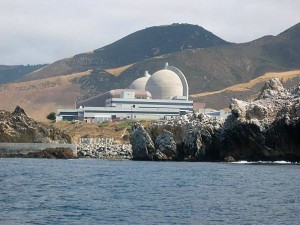Advanced seismic research confirms earthquake safety at Diablo Canyon
Studies provide an unprecedented view into the earth near nuclear power plant

This was the main finding in a report PG&E submitted today to the federal Nuclear Regulatory Commission (NRC), the chief safety regulator for the nation’s commercial nuclear power plants. The report was also presented to the California Public Utilities Commission’s (CPUC) Independent Peer Review Panel (IPRP), an advisory task-force that reviewed how the advanced seismic studies would be performed and provided insight and comments to the utility’s researchers.
“This research effort, utilizing the latest technologies, demonstrates Diablo Canyon continues to be seismically safe,” said Ed Halpin, Senior Vice President and Chief Nuclear Officer at PG&E. “These studies provide scientists and regulators an unprecedented scientific analysis of the seismic characteristics near Diablo Canyon.”
“Vast resources have been devoted to examine onshore and offshore fault systems in the region of interest to better understand potential hazards,” said Neal Driscoll, a professor of geology and geophysics at the Scripps Institution of Oceanography at the University of California, San Diego. “In my opinion, outside of oil and gas exploration, the offshore areas by Diablo Canyon are one of the most studied continental regions in the world.”
An example of one of the significantly improved techniques used in this research is the use of state-of-the-art 3D PCable equipment to survey fault systems offshore. This technology provides detailed imaging of steeply dipping faults that are difficult to image using traditional 2D multichannel seismic data. The 3D data provide measurements of fault offsets at unprecedented scales, both vertically and more importantly horizontally. Offset information is a critical input to informing hazard assessments.
The advanced seismic research report contains a summary and 12 detailed, technical reports of key regional seismic features. It also provides updated information on the level of potential ground motions, or shaking that could be produced by earthquakes on local geologic faults.
Knowledge of ground motions is used by engineers to design and evaluate structures to determine if they are seismically safe. Ground motion strength is derived from determining both the magnitude of an earthquake and the distance from a fault line to a specific location. It also depends on natural features, such as whether a structure is built on sturdy bedrock, like Diablo Canyon, or weaker soil, like sand.
“This research confirms previous analyses that the plant is designed to withstand the ground motions from earthquakes in the region, and that major components can continue to perform their safety functions during and after a major seismic event,” said Halpin.
In addition to providing the research to federal and state oversight bodies, PG&E is also sharing the information with local public agencies. They will be able to incorporate the information into their respective emergency preparedness plans and in safety evaluations of critical infrastructure.
PG&E will also use the data to support its Long Term Seismic Program (LTSP), which continually assesses seismic safety at Diablo Canyon. The LTSP is a unique program in the U.S. commercial nuclear power plant industry and was required by PG&E’s licenses to operate the facility. It is comprised of a geosciences team of professionals who partner with independent seismic experts on an ongoing basis to evaluate regional geology and global seismic events to ensure the facility remains safe.
The research will also support a new, NRC-mandated seismic hazard re-evaluation that is being required for all U.S. commercial nuclear power plants. Under this process at Diablo Canyon, existing and new seismic information is being peer-reviewed and publically evaluated by independent experts as part of the NRC required Senior Seismic Hazard Analysis Committee (SSHAC) process. The SSHAC process conclusions will be used to update the models that characterize the seismic hazard near Diablo Canyon. The seismic hazard re-evaluation is due to the NRC in March 2015.
“As a scientist and a member of the SSHAC process, I look forward to reviewing the data presented in these new reports,” said Driscoll. “The information gathered will be of benefit to researchers for decades to come.”
Seismic research background
PG&E began its advanced seismic research in 2010. The research focused on providing a more detailed picture of the region’s complex geology and on further defining the level of seismic activity and ground motions that earthquake faults in the region are capable of producing. PG&E completed onshore and offshore seismic surveys at the end of 2012, and installed ocean-bottom seismometers in 2013 to detect and record seismic activity. An evaluation of the survey data has been underway since that time.
About Diablo Canyon Power Plant
Diablo Canyon Power Plant is a nuclear power facility owned and operated by PG&E. Its two units together produce approximately 2,300 net megawatts of carbon-free power. It provides more than 20 percent of the electricity that PG&E delivers to its customers, or enough energy to meet the needs of more than three million Northern and Central Californians. Diablo Canyon has a $920 million annual local economic impact and is the largest private employer in San Luis Obispo County.
About PG&E
Pacific Gas and Electric Company, a subsidiary of PG&E Corporation (NYSE:PCG), is one of the largest combined natural gas and electric utilities in the United States. Based in San Francisco, with more than 20,000 employees, the company delivers some of the nation’s cleanest energy to nearly 16 million people in Northern and Central California.




















